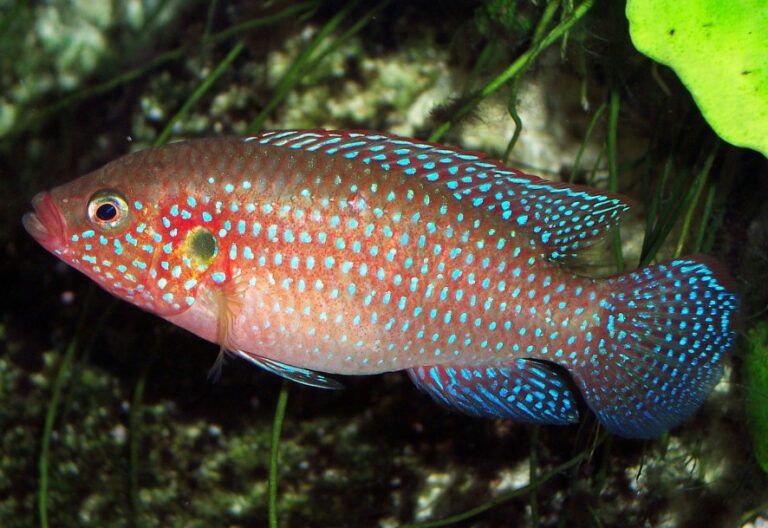Tiger Barb: Exploring their Feisty Nature and Dynamic Behavior
Tiger barbs (Puntigrus tetrazona) are renowned for their striking patterns and feisty demeanor. These vibrant little fish, native to Southeast Asia, have been popular among aquarium enthusiasts for decades. But beyond their illustrious outer appearance lies a complex behavioral pattern that is as dynamic as it is fascinating. In this comprehensive guide, we’ll immerse you in the world of the tiger barb, shedding light on every facet of their existence — from their aggressive tendencies to their social structure, dietary habits, and even their breeding rituals.

Physical Traits and Habitat
The tiger barb’s name is no coincidence; their vivid colors and bold stripes closely resemble the majestic big cat. These fish are relatively small, typically reaching about 2 inches (5 cm) in length. They exhibit sexual dimorphism, with females being larger and rounder than males, especially when they are ready to breed.
Appearance
Tiger barbs sport four thick, black stripes on a silver-gold to orange background, somewhat resembling a tiger’s coat. Their dorsal fins are often red, and their tails are a golden-rosy color. Though the wild variant is much more striking, years of selective breeding have given rise to various color morphs that can be found in pet stores worldwide.
Ideal Tank Setup
Creating an environment that mimics their natural habitat will not only make them feel at home but also enhance their colors and behavior. A 20-gallon tank is ideal for a small group, with plenty of horizontal space for them to dart around. Dense plant cover and aquarium safe caves or driftwood can provide hiding places and breaks in their line of sight, reducing stress that can lead to aggressive behavior.
Maintaining water temperature between 75° to 80°F (24° to 27°C) is vital, along with a slightly acidic to neutral pH level (6.0 to 7.5) and soft to moderately hard water. A well-cycled filtration system is necessary, given their robust appetite which can lead to more waste in the tank.
Behavioral Patterns
Tiger barbs are not for the faint of heart. With their high energy levels and somewhat aggressive nature, they may not be the best choice for a community tank with peaceful species. However, understanding their behavior can help manage their vivacity and aggression.
Aggression and Hierarchy
In the wild, tiger barbs live in large schools and establish a strict hierarchical order within the group. The males can be quite aggressive towards each other, constantly jockeying for the top position. This aggression is usually kept within the species, but in confined spaces like an aquarium, it can lead to nipping fins of slower or more docile tank mates.
Social Interactions
Tiger barbs are incredibly social. They do best when kept in a school of six or more, with the distraction of their fellows to reduce the intensity of aggression towards a single fish. When kept in large enough groups, they can be seen schooling tightly and interacting closely with each other, which is a truly spectacular sight in a well-maintained tank.
Feeding Habits
In the world of the tiger barb, the hunt never stops. These omnivores are not picky eaters and will consume almost any food you offer. A balanced diet is important in maintaining their health and curbing any excessive aggression caused by hunger.
Dietary Preferences
Their diet in the wild consists of small insects, algae, and occasionally, small crustaceans. In the tank, they should be fed a varied diet including high-quality flake or pellet food, freeze-dried or live foods like bloodworms or brine shrimp, and even some vegetables for roughage.
Feeding Schedule
Adult tiger barbs should be fed twice a day, only enough that they can consume in 2-3 minutes. Overfeeding can lead to obesity and health issues, not to mention, it will exacerbate their aggression.
Breeding and Reproduction
The reproductive behavior of tiger barbs is as energized as their feeding habits. When it comes time to spawn, the frenetic energy and high activity levels of the species shift towards courting rituals and nesting preparation.
Reproductive Habits
Males will display to females by flaring their fins and vibrantly displaying their colors. Once the females are gravid, they will lay their eggs among plants, and the males will fertilize them externally. It is common for tiger barbs to eat their eggs, so be sure to provide plenty of plants or a separate breeding tank with a mesh bottom to allow eggs to fall away from the adult fish.
Breeding in a Home Aquarium
For the ambitious aquarist who wishes to breed tiger barbs, a separate breeding tank is highly recommended. A small 5 to 10-gallon tank with a sponge filter or air stone will provide enough space for the breeding pair to do their work. Condition them with live foods and plenty of water changes to simulate the rainy season, which triggers their breeding behavior.

Health and Care Tips
Keeping tiger barbs healthy is a combination of best practices in tank maintenance and attentive care. As with any pet, prevention is the best cure, and understanding the common health issues for your species is key.
Common Health Issues
Tiger barbs are fairly resilient, but they can be susceptible to common fish diseases like ich (white spot disease), and fungal infections. Rapid temperature changes and poor water quality are often contributing factors to these ailments.
Essential Care Practices
Regular water changes and water testing will go a long way in keeping your tiger barbs healthy. Ensure that any new additions to the tank, whether fish, plants, or decorative items, are properly quarantined to prevent the introduction of pathogens.
Maintain a balance in the tank by not overstocking it and keeping an appropriate number of tiger barbs for their school. Ensure there is ample swimming space and cover to mimic their natural habitat. An established tank with a healthy biofilm will also provide additional nutrients and encourage natural foraging behavior.
Conclusion
In the grand tapestry of underwater life, tiger barbs add a unique splash of color, vitality, and complexity that few other species can match. While their taunting nature might be a bit much for some aquarists, those willing to invest the time and effort into understanding and providing for them are richly rewarded with a display of characteristic behaviors that is truly captivating. For beginner fish keepers willing to take on the challenge, the feisty tiger barb can bring a powerfully dynamic element to any aquarium.







